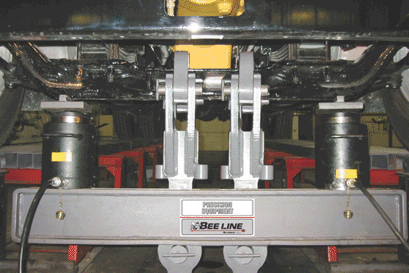What are the leading wheel alignment factors?
- Laing Industries

- Jun 19, 2017
- 1 min read
Wheel alignment is the positioning of the interrelated angles of a front suspension, rear axle or housing to give the maximum amount of tire life, steering ease, steering stability and increased life of suspension components. Improper wheel alignment results in excessive or irregular tire wear, hard steering, poor drivability and premature failure of suspension parts. Several alignment factors must be considered to achieve proper wheel alignment. The top four factors are toe, tracking, camber and caster.
Toe and tracking are the two most critical alignment settings for front end tire wear. Bee Line gauging equipment incorporates lasers to measure for proper steer axle toe. Toe is adjustable to reduce tire wear and shimmy in the steering wheel. Excess or too little toe will make the front wheels fight each other, resulting in feathering, diagonal wear or excessive shoulder wear. An out-of-toe condition leads to rapid tire wear. Tracking misalignment also will cause inside outside wear of the steer tires. Tracking, or thrust, is gauged relative to the vehicle centerline.
Camber and caster are the third and fourth most critical alignment settings for front end tire wear. Camber — the inward or outward tilt of the top of the wheel — is important for several reasons. Its main purpose is to keep the tire flat on the road while the vehicle is loaded and in motion. If camber is excessive, it will create shoulder wear. Caster is the forward or rearward tilt of the king pin. Extreme caster settings can cause handling problems, leading to driver fatigue.
Please call Laing Truck & Trailer to schedule your alignment at 607-775-9776.









Proper wheel alignment is key to extending tire life and improving handling. Factors like toe, camber, and caster all play a crucial role in keeping your ride smooth and efficient. Regular checks can save you from expensive tire replacements and make your driving experience much safer!